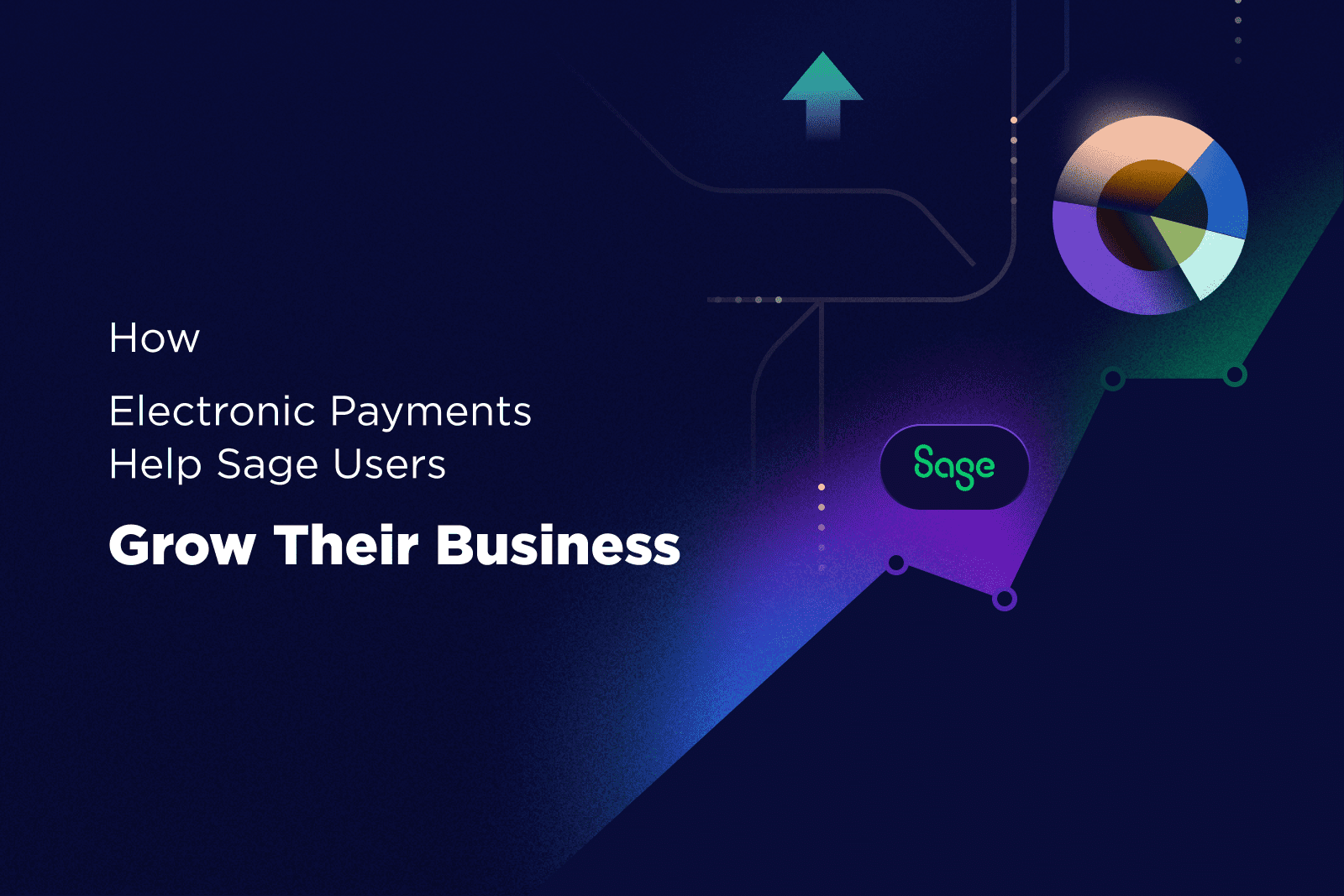After years of defensive financial measures, businesses are ready to grow again.
Paying suppliers electronically is one way that Sage users can achieve this growth.
When it comes to business growth, most Sage users may not think about disbursements or AP payments. Disbursements are a cost of doing business or a necessary evil, they might reason.
But electronic payment methods such as Automated Clearing House (ACH), Real-Time Payment (RTP), virtual card, and push payments provide Sage users with a powerful growth-generating tool.
Here are 5 ways that digital payments can help Sage users grow their business.
- Paper checks cost 30 times as much as electronic payments, studies show. Paper checks require staff to print, sign and mail paper checks, replace lost checks, respond to supplier inquiries, reconcile payments and invoices, and add staff as volume increases. Checks also are responsible for more fraud losses than paper checks. The money saved from electronic payments can support the business and be invested in projects that yield long-term growth.
- Paying suppliers with a solution embedded within Sage allows businesses to better manage the timing of payments. Invoices ready to pay are moved from Sage to the payment solution in real-time. Payments can be initiated instantly, automatically paid to terms, or scheduled for a time when it’s more convenient for the company’s cashflow. RTP allows businesses to get payments to suppliers or individuals within moments, avoiding late payment penalties.
- The early-payment discounts enabled by electronic payments provide Sage users with risk-free returns on the business’ cash. Businesses achieve an average 2% return on the invoice due amount on payments made early, per the Institute of Finance and Management (IOFM). But businesses in industries such as biotechnology, pharmaceuticals, consumer packaged goods, high-tech consulting earn even higher early-payment discounts, IOFM finds.
- Electronic payments solutions provide CFOs with real-time visibility into critical working capital and spending metrics such as accruals, spending per supplier, department spending, DPO, late-payment penalties, percentage of early-payment discounts captured, percentage of payments made electronically, cost per payment processed and more. CFOs rely on these types of metrics to tightly manage their business’ working capital to forecast cash needs.
- Paying suppliers electronically frees finance staff to focus on value-added working capital activities such as working capital or spend analysis, supplier management, and vendor master management. Staff no longer are burdened by transaction processing tasks such as printing and mailing checks, fielding supplier inquiries, and reconciling payments with invoices. One or more payments can be made from directly within Sage with just a few mouse-clicks. And the bi-directional synchronization between the payment solution and Sage can save a business’ finance team a hundred hours or more each month in administrative tasks.
Learn how digital payments can help your business grow.




